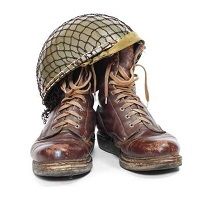Article
Military Service Blamed for ALS
Author(s):
The causes of amyotrophic lateral sclerosis (ALS) remain a mystery but a Danish study offers one clue: serving in the military seems to increase ALS risk.

The causes of amyotrophic lateral sclerosis (ALS) remain a mystery but a Danish study offers one clue: serving in the military seems to increase ALS risk.
In an abstract to be presented at a poster session April 21 at the American Academy of Neurology meeting in Washington, DC, Ryan Seals, a doctoral candidate in epidemiology at the Harvard School of Public Health in Cambridge, MA, and colleagues report on ALS cases in the entire population of Denmark.
The cases were found in the Danish National Hospital Register between 1982 and 2009. Occupational histories were determined by the Danish National Pension Fund database.
The team found that between Jan. 1, 1982 and De. 3, 2009, there were 3,650 hospitalized cases of ALS in Denmark. Military workers overall had a significantly elevated rate of ALS diagnosis, 1.30 times that of age-matched controls. The risk was even higher (1.63) in those who had military service in the decade prior to being diagnosed with ALS.
“Occupation with the military in Denmark was positively associated with ALS risk, the first time sucah and association has been documented outside the US and with prospectively collected national registry data,” the team wrote. The risk may decrease after leaving the military, they added.
The possible reasons for the higher association with ALS in people in the armed services include exposure to insecticides, aerosolized lead, traumatic injury, viral infections, and organic solvents, they wrote. Engaging in intense physical activity is also a possible factor.
Prior studies have found an increased risk of ALS in US military veterans and according to the ALS Association the illness is recognized as a service-connected disease by the US Department of Veterans Affairs.




